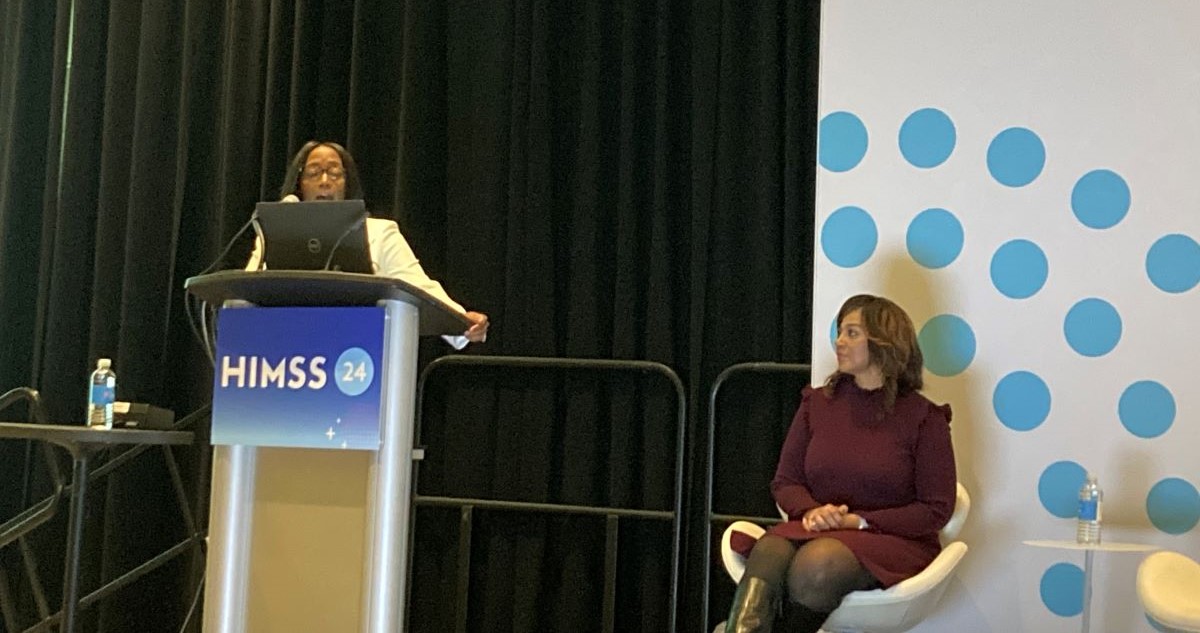
Photo: MobiHealthNews
ORLANDO – At HIMSS24, Georgia Health Information Network discussed its Georgia Unity platform, a health information exchange network developed with local community partners, created due to the need to understand total health in Georgia’s rural communities.
Dr. Denise Hines, executive director at Georgia Health Information Network, and Shirelle King, program manager at Georgia Health Information Network, said the goal of the project was to use social determinants of health to close gaps in health equity and build structures for better health outcomes.
Utilizing Aetna’s health platform, the technology provides closed-loop referrals between healthcare organizations and community-based partners targeting high-need individuals.
“As providers will tell you, traditional views of health are only about 20% of healthcare. The other 80% is social determinants of health; things like food security, clothing and housing. That is what we wanted to focus on,” said Hines.
Whole person care is crucial for building trust in communities, and for achieving improved health outcomes, especially in rural health communities, where care interventions are difficult to access and health education can vary greatly.
Some of the challenges Georgia Unity faced in beginning the process include the limited capabilities of community partners like homeless shelters, which often have issues with record keeping and inconsistent technology usage.
Another issue was the financial constraints preventing community organizations from utilizing new technology being adopted by larger healthcare organizations.
This made data gathering, sharing and consistency a key issue Georgia Unity worked to address across the state.
The results of the first year of the project included a savings of $11,248 per person, per year, and 2,000 referrals to community health resources in Emanuel County, a county of 20,000 residents.















